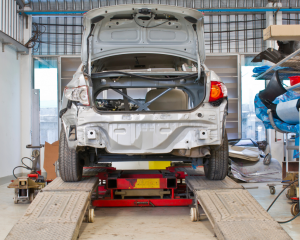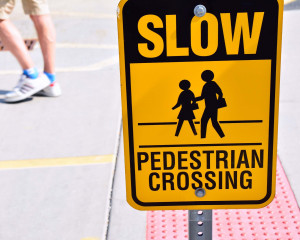Let’s face it, most people will experience some form of lower back pain in their life. The hope is always that lower back pain will go away on its own, and in most situations this is true. Back pain often gets better after a few days with rest, stretching, and pain medication. But who should you turn to when your pain symptoms are not going away or worsening to an unbearable amount?
In serious cases, it may be time to consider visiting an orthopedic surgeon for your back pain. Orthopedic surgeons can help diagnose and treat severe pain in the lumbar spine (lower back).
In this resource, we will discuss how orthopedic surgeons can help treat lower back pain and when you should seek treatment through an orthopedic surgeon.
What Is Lower Back Pain
Lower back pain is an extremely common health issue that affects people indiscriminately. In fact, more than three million people suffer from some type of lower back pain annually. The symptoms can vary widely depending upon the nature of your injury. Some people may experience a dull throbbing pain, while others may experience a crippling stabbing pain.
Orthopedic surgeons place lower back pain into two categories:
Chronic Back Pain
Back pain is considered chronic if your pain symptoms continue for three or more months, even after you have gotten treatment for the initial injury. If nonsurgical treatments fail to help manage pain, surgical options may be needed to treat chronic back pain.
Acute Back Pain
Acute back pain can last for four to twelve weeks and is usually treatable through non-surgical intervention (physical therapy, chiropractic care, pain medication).
Common Causes Of Lower Back Pain
According to the National Institute of Neurological Disorders and Strokes (NINDS) , some of the primary causes of lower back pain
include:
1) Traumatic Injuries
High impact trauma can cause a lot of damage to your spine and the soft tissue of your back. This can lead to injuries such as herniated discs or muscle tears.
2) Disc Degeneration
Our intervertebral discs allow us to bend and twist our bodies. As we age, healthy, flexible discs can begin to degenerate due to wear and tear, arthritis, or other reasons. This degeneration can lead to pain and trouble moving, bending or twisting.
3) Sciatica
Your sciatic nerve starts at the end of the spinal cord and extends through the buttocks, down the back of the legs, and to the heel and sole of the foot. When inflammation puts pressure on the sciatic nerve, it can create a burning, shocking pain in the lower back, buttocks, legs, or feet. This is known as sciatica.
4) Spondylolisthesis
Injury can cause the vertebrae in your lower spine to slip. A slipped disc can pinch nerves around the spinal column, creating pain, weakness, numbness, or tingling in the back.
5) Herniated or Ruptured Discs
A herniated disc occurs when the intervertebral disc becomes compressed and the soft gel-like nucleus bulges outward. This can put pressure on or pinch a nerve in the spine.
6) Spinal Nerve Root Injury (Radiculopathy)
Injuries can cause inflammation around the spinal nerve roots. This can irritate the nerves and cause pain to radiate from the spine down through the limbs.
7) Skeletal Irregularities
People can be born with or develop curvatures or other irregularities in their spine as they age. Scoliosis (curvature of the spine), lordosis (an exaggerated arch in the lower back), and kyphosis (an excessive outward arch of the spine) are examples of congenital abnormalities of the spine.
8) Spinal Stenosis
This is a condition where the passageways of the spinal column narrow, putting pressure on the nerves. This can lead to pain, weakness, numbness, and tingling.
9) Sprains and Strains
These are common injuries that can lead to acute back pain. People may strain or tear muscles, ligaments, or tendons in their back due to overuse, exercise, heavy lifting, sports injuries, or other traumas.
Risk Factors For Lower Back Pain
The unfortunate reality of life is that some of us will be more prone to developing lower back pain than others. Here are some factors that could put you at higher risk for developing back pain:
Age
Most people will experience some level of back pain as they get older. Our bodies are not as good at healing and repairing ourselves as we get older and the likelihood of developing spinal conditions or general injury increases. Some people develop osteoporosis which can make the bones weaker and cause the spine to fracture more easily.
Obesity
Being overweight can put you at a higher risk of developing back pain. The excess weight places more pressure on the body, especially the spine and back muscles as they work harder to stabilize your body. This excess pressure can lead to aches and pains in the back.
Fitness
Your level of fitness plays an important role in your overall health. People with weak abdominal muscles have less support for the spine and are subsequently at more risk for developing back pain.
Genetics
Your family history can also put you at greater risk for certain conditions. Ankylosing spondylitis, a form of arthritis that causes back pain, can be passed on genetically.
Pregnancy
The changes in the pelvis women experience due to increased weight gain during pregnancy can lead to lower back injuries and pain. Sometimes this pain does not get better after giving birth.
Job-Related Risks
The work you do can also put you at risk for pain. People who work jobs that require a lot of heavy lifting are at a greater risk for back injuries. On the other hand, people who work desk jobs can develop aches and pains in their backs from sitting in the same positions for long periods of time.
Smoking
Smoking can increase your risk for a whole host of health issues and back pain is no exception. People who smoke restrict oxygen and blood flow to their discs, making them more likely to degenerate faster.
Mental Illness
Mental health can play a role in how people perceive the severity of their pain and how much they focus on that pain. People with extreme stress may also be more likely to develop injuries because their muscles tend to be in a constant state of tension.
Backpack Overload
Adults and children that carry extremely heavy backpacks are at greater risk for developing back injuries due to the extreme weight they are carrying around. This weight puts excess stress on your spine and the muscles of your back as they work to stabilize you.
Surgery Should Not Be Your First Choice
Always keep in mind that surgery should never be your first choice for treating lower back pain. Before you decide to visit an orthopedic surgeon for treatment options, check in with your primary care physician to see what their recommendations are.
Your primary care physician may recommend rest and stretching, with some pain medication for up to 12 weeks to see if the pain goes away. They may also refer you to another specialist for non-surgical treatment, such as a physical therapist or a chiropractor. If non-surgical treatment options have proven ineffective, your primary care physician may feel it is time for you to visit an orthopedic surgeon.
Non-Surgical Treatment Options For Lower Back Pain
If your lower back pain is severe enough, your doctor may send you to an orthopedic surgeon for treatment. This does not always mean that you will need surgery. Often, an orthopedic surgeon may recommend non-surgical treatment options first.
Non-surgical treatments include:
Nerve Block Therapies
This is a type of pain treatment that involves using local anesthetics, botulinum toxins, or steroids to help block nerve pain. Orthopedists must be able to identify and target the right nerves for this method to be effective.
Epidural Steroid Injections
Orthopedic surgeons often use epidural steroid injections to help treat pain from conditions, such as sciatica. Epidural steroid injections can provide pain relief for weeks or months, but do not provide permanent relief. Repeat treatments are usually required.
Transcutaneous Electrical Nerve Stimulation (TENS)
An orthopedic surgeon can use battery-powered electrodes to generate impulses that help block peripheral nerve pain.
Endorphins may also be elevated with the use of TENS which helps to naturally numb pain.
Surgical Treatment Options For Lower Back Pain
An orthopedic surgeon will try to exhaust all non-surgical treatment options before considering surgery for lower back pain in most cases. If non-surgical intervention has proven ineffective, it may be time to discuss surgical treatment options.
The type of surgery required to treat your lower back pain will depend on the reason for your pain. Modern advancements in surgical procedures have made it possible to treat many conditions using minimally invasive techniques that do not leave excessive scarring and allow for faster recovery times.
However, some conditions may still require more invasive surgery and may take months for patients to fully recover. The following are some examples of surgical treatments orthopedic surgeons use to treat lower back pain.
Discectomy or Microdiscectomy
This procedure is usually used to help treat a herniated or ruptured disc. Surgeons make a small incision in the back, above the damaged disc. Using specialized surgical tools, a surgeon then cuts away and removes the portion of the disc that is bulging out and causing pain. A discectomy is a more invasive procedure while a microdiscectomy is less invasive.
Spinal Decompression (Laminectomy)
An orthopedic surgeon uses spinal decompression to treat spinal stenosis. This minimally invasive procedure uses small surgical tools to cut out bone spurs or other portions of the vertebral walls (lamina) that are putting pressure on the spinal column. This helps ease pressure on the nerve and relieve pain.
Vertebroplasty and Kyphoplasty
Another minimally invasive procedure employed by orthopedic surgeons. Kyphoplasty is performed to help prepare the patient for vertebroplasty by gently inflating a balloon to help restore height to a collapsed vertebrae. Then the vertebroplasty is performed by injecting bone cement in the vertebrate’s largest area and allowing it to harden. This stabilizes the vertebrae and helps relieve pain.
Spinal Fusion
A spinal fusion is often used to treat damage caused by degenerative disc disease (spondylolisthesis). Surgeons can perform spinal fusions by either making an incision in the abdomen (anterior lumbar interbody fusion) or in the back (posterior fusion) to reach the spine.
Orthopedic surgeons will then remove any damaged portions of the vertebral discs. Once the damage has been removed, adjacent vertebrae are fused together using bone grafts and metal devices.
This procedure requires a longer recovery time for the bone grafts to heal. Patients will also lose some amount of flexibility and range of motion after a spinal fusion.
Artificial Disc Replacement
When a disc has been damaged to a significant degree, it may need to be removed completely.
In this case, a surgeon can remove the damaged disc and replace it with a synthetic disc that acts to restore normal function to the spine.
Foraminotomy
A foraminotomy is often used to help treat pain from a bulging or herniated disc. The bony hole (foramen) where the nerve root leaves the spinal canal can become narrowed due to inflammation from a bulging disc. Surgeons use a foraminotomy to help widen the foramen, relieving pressure on the nerves and alleviating pain.
When To Visit An Orthopedic Surgeon
Nobody ever wants to get spine or back surgery, but some cases may require surgical intervention for treatment. If you have spoken with your primary care physician and exhausted other non-surgical treatment options, it may be time to visit an orthopedic surgeon.
Orthopedic surgeons can be helpful in not only treating lower back pain, but also diagnosing the root cause of your pain. You may even find that an orthopedic surgeon was able to treat your pain without the need for surgery.
Using diagnostic tests, such as X-rays, CT scans, Myelograms, MRIs, blood tests, or bone scans, an orthopedic surgeon can help diagnose what is causing your pain and develop an ideal treatment plan for you. If they deem surgery is necessary, they can help guide you through every step of the process and get you the care you need to manage your pain.





